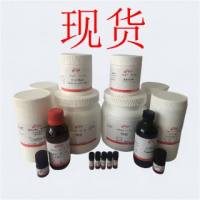Synthesis and Characterization of Chitosan Scaffolds for Cartilage-Tissue Engineering
互联网
467
Chitin, poly(N -acetylglucosamine) is a structural polysaccharide found in the shell of crustaceans and mollusks and is typically isolated from waste produced in food processing. The procedure for extracting chitin from crustacean shells usually involves decalcification, deproteination, and decolorization, which may be accomplished by sequential treatment in 5% HCl solution, 5% NaOH, and 0.5%KMnO4 (aq) and oxalic acid. Chitosan , poly(N -acetyl-2-amino-2-deoxy-d -Gluco-pyranose), is formed through the N -deacetylation of chitin, usually by treatment with strong alkalis (e.g., 50% NaOH) at an elevated temperature. It is a linear, polycationic copolymer of N -acetylglucosamine and glucosamine (combined by 1–4 glycosidic linkages), with the degree of deacetylation defined as the molar fraction of N -acetylglucosamine units. Several studies have linked the biological activity of chitosan to its degree of deacetylation and mol wt (1 –6 ), parameters that may be controlled by varying the time and temperature of the deacetylation reaction.








